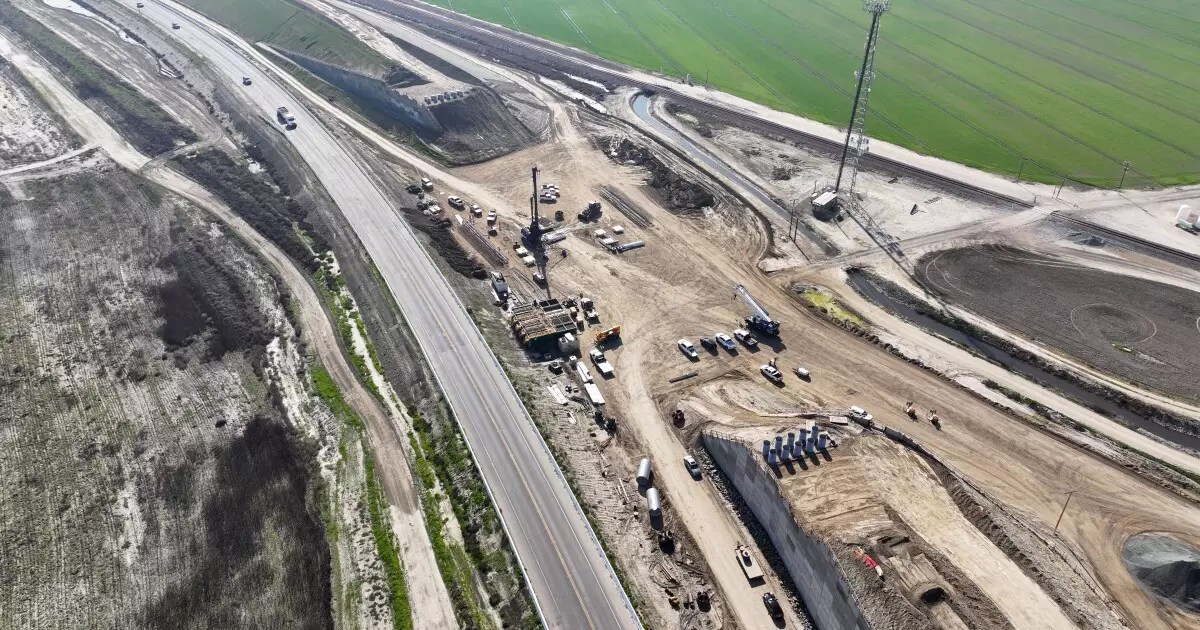The collapse of California’s high-speed rail project exemplifies the dangers of overambition paired with poor oversight. Initially touted as a transformative infrastructure that would revolutionize transportation and boost economic growth, the project has instead become a symbol of government excess, waste, and misplaced priorities. Despite over a decade of promises, the project’s true costs have soared exponentially, and its progress remains painfully inadequate. Federal authorities, recognizing this, have finally pulled the plug on billions of dollars of funding — an act that exposes the deeper flaws in planning, accountability, and fiscal discipline.
This decision signals a harsh but necessary acknowledgment that radical overreach often results in failure. Federal grants of nearly $4 billion, promised and renewed multiple times, have been entrusted on the basis of ambitious projections and optimistic assumptions. Yet, years later, the project’s inability to adhere to concrete milestones or efficiently manage costs has rendered those promises hollow. The federal government’s move to revoke the funds indicates that bureaucrats are no longer willing to pour taxpayer dollars into a project that has consistently misfired—a rare but critical correction in a landscape plagued by political hubris.
The Dangers of Overpromising and Underperforming
The history of the California high-speed rail underscores a broader issue: the peril of relying on overly rosy forecasts and political expediency to justify massive public investments. The original plan aimed for a sleek, Los Angeles to San Francisco train — an icon of innovation and progress. However, the anticipated costs ballooned from an initial $33 billion estimate to as much as $128 billion, with a shortfall of nearly $100 billion threatening the project’s very survival. This discrepancy reveals a fundamental lack of realistic planning, transparency, and oversight.
Such overpromising is symptomatic of a political climate that often prizes headlines over accountability. Voters were told that the project would be a game-changer for California’s economy, health, and mobility, but they were never fully informed—or perhaps deliberately misled—about the true scope and financial risks. When the project ran into inevitable delays and cost overruns, the rhetoric shifted from confidence to denial, and taxpayers bore the brunt of the failure. In the end, the project exposed how ideology can override pragmatism, leading to unnecessary suffering and skepticism about infrastructure investments.
Federal Withdrawal and Political Consequences
The federal government’s decision to terminate funding underscores the consequences of unchecked political meddling and mismanagement. The Trump administration’s skepticism about the project reflected a broader philosophy that prioritized fiscal responsibility and skepticism of overly ambitious government projects. By rescinding the grants, it aimed to prevent further wasting of taxpayer money and to send a clear message: federally funded boondoggles have no place in responsible governance.
This stance, while contentious, is rooted in a realistic assessment that large-scale infrastructure projects must be built on solid foundations — not political promises or inflated ridership projections. The project’s history reveals overreliance on rosy forecasts that proved false, with ridership expectations overestimated and environmental or economic benefits exaggerated. The federal withdrawal is not merely about funding; it is a recognition that the project’s management was fundamentally flawed and that future investments must be grounded in accountability and transparency.
The Political Divide and Its Impact on Project Outcomes
The debate surrounding California’s high-speed rail underscores a deep political divide that influences public infrastructure projects. Supporters, often aligned with progressive agendas or optimistic visions of modernization, pushed the project forward despite mounting evidence of risks and delays. Opponents, viewing it as a symbol of government waste and misplaced priorities, argued from the outset that the project was inherently flawed.
The latest developments—federal de-funding coupled with state efforts to salvage what’s left—highlight a complex interplay of politics. California’s governor, Gavin Newsom, is actively exploring alternative funding mechanisms, including state revenue streams and private investments, to ensure the project does not entirely fall apart. This pragmatic turn suggests that the project’s failure is not solely due to mismanagement but also a reflection of ideological stubbornness on both sides: the push for grand government projects without sufficient accountability, and the resistance to admit failure and cut losses.
In a broader sense, the high-speed rail’s saga reflects a political culture that often sacrifices fiscal prudence for short-term gains or populist appeal. The federal government’s stance signals a possible shift towards more cautious and responsible infrastructure planning, emphasizing results over promises, and expenditures aligned with realistic capabilities. If such accountability becomes the norm, it could prevent future costly failures of similar scale which threaten taxpayer trust and economic stability.


Leave a Reply